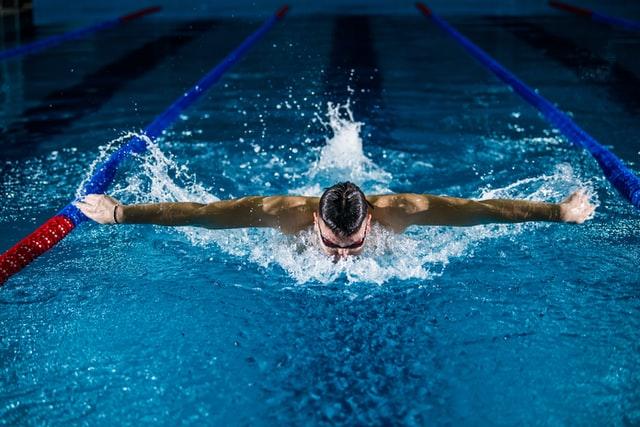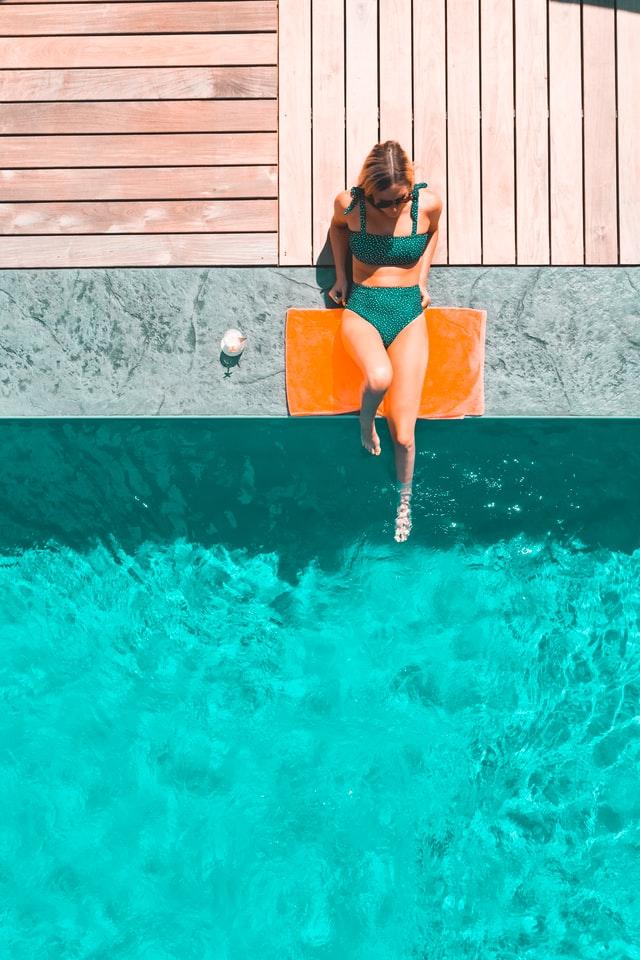Swimming Temperature Guide (With Chart)
It’s time to face it, you can’t always swim in the ocean. Sometimes it is just way too cold to be comfortable. But how cold is too cold?
Generally, the right swimming temperature will depend on your tolerance to the cold. Anything below 18°C or 64°F is considered to be cold water swimming. Temperatures above that are more comfortable for those not acclimated to the cold.
Read on to learn more about the temperatures you should look for when going for a dip and some tips on acclimating your body to cold water swimming.

What is the Ideal Swimming Temperature?
A comfortable temperature for swimming will depend on what you prefer, your age/body type, and the activity you are completing. Some people prefer to swim in water so warm it is like bath water, while others prefer swimming to be a cooling experience. Below is a chart with some ideal swimming temperatures.
Comfortable Water Temperatures
As you can see there is quite the range of temperatures here but they are all safe water temperatures for swimming outside. The reason there is such a variance is because body fat plays a huge part in how well your body can withstand different temperatures. Babies, for example, have a hard time regulating temperature anyway, which is why there is such a small window of water temperatures that are okay for them.
On the other hand, pregnant women can overheat quickly and become uncomfortable, which is why they will typically find they prefer their swimming water to be a bit on the cooler side.
No matter what, if you are considering spending a significant amount of time in the water, ensure you discuss with your health care provider whether you should consider a hotter or colder swimming temperature based on your personal physical condition.
When is it Too Cold to Swim Outside?
As a swimmer, you will not always have the luxury of swimming indoors in a heated pool. Many pools around the world are located out of doors and rely on the sun to heat them up each and every day. When this is the case, you must also look at the air temperature to ensure you will be comfortable when you exit the pool.
When it comes to the ocean you will want to check the sea temperature when you are planning to take a dip, as well as the air temperature as most oceans have a sea breeze. The windchill can play a huge part in if it is comfortable to take a dip or if you’re better off keeping your feet on dry land.
Again, the best air temperature for swimming depends widely on the activity you are planning to participate on in the water. If it is something athletic, you will not mind so much if it is chilly when you step out versus if you are getting in the water for aquatic therapy.
Below is a chart with ideal temperatures for swimming.
Of course it will not always be possible to offer swimming competitions during only ideal temperatures, and thus many people find themselves competing when it is much colder outside. But when you are talking about best performance and most comfortable temperatures, this chart just about covers it.

What is the Temperature of Cold Water?
Although it isn’t comfortable, there are an entire group of elite swimmers known as cold water swimmers who devote much of their athletic ability to acclimating themselves to cold water.
Cold water is considered to be water below 18°C or 64°F and any activity which occurs in this water is preceded by the tag “cold water” such as cold water swimming or cold water kayaking.
Cold water swimming is a very dangerous sport and is something that should not be attempted by anyone who has not been properly trained. This is because spending time in the cold water unprepared can lead to cold water shock, or even more dangerous, hypothermia.
It is too cold to enter any water that is below 10°C or 50°C without a proper wetsuit or medical guidance. If you are unsure of the temperature of a local lake or stream it is best to not swim if you put your hand in and the water feels ice cold. This is a sign that the water is too cold for your body.
Steps to Acclimate to Cold Water
The reality is, however, that if you hop in a lake or the ocean when the water is 68°F or 20°C you will not be a happy camper, even though this is not considered cold water swimming. To help yourself acclimate to water that is slightly colder than normal (but not cold water swimming temps) there are a few steps you can take.
1. Start with Just Your Hands or Feet
Start by just dipping your hands or feet in the pool/lake. After a few minutes of submersion and keeping them still, you will notice that the water doesn’t seem as cold as it did when you first put your hands or feet in.
2. Add Another Body Part
If you are walking into a lake, this is where you go in a little deeper, maybe to your kneecaps or thighs. Stand still for a few minutes allowing your body to acclimate. Remember to take deep breaths and stay calm.
3. Go in up to Your Waist
Next step is to get in all the way to your waist, again pausing while you acclimate. If you went up to your thighs before, maybe go up to your belly button. Remember to breathe!
4. Go in up to Your Neck
Now you might be ready for the full plunge, but your head can be a difficult step. Walk all the way to your neck and wait a few minutes. Keep your breathing steady, calm, and slow. You may even find the temperature relaxing!
5. Dive in!
At this point, it shouldn’t be difficult to duck your head in and get yourself completely wet. You should be ready to start swimming at this point.
If at any point during this plunge you find yourself too cold, turn around and leave the water immediately. Remember to always swim with a buddy as well!
Obviously, the alternative to these steps is just diving in, which can also be a good way to get yourself acclimated to water that is just a little too cold. Just be prepared to be a bit out of breath when you come up for air!
Don’t forget that a great way to keep yourself warm while swimming in cold water is to buy a proper wetsuit. A wetsuit that is thick enough for the water temperature you plan to swim in can go a long way toward making a cold water swimming experience into something much more pleasant. Professionals recommend wearing a wetsuit in any water colder than 15.5°C or 60°F. Check out our wetsuit temperature guide for more information about the wetsuit that is right for your water temperature!

Final Thoughts on Swimming Temperatures
As you can see there are many swimming temperatures out there and what is comfortable for you will depend on the activity you are performing. Just be sure if there are small children or older adults with you that you check the water is safe for them before you let them dive in!
Unfortunately, not every pool you come across will be your perfect temperature, and many unheated pools across the world rely on air temperature to heat up! When this is the case you must take a few minutes to acclimate your body to the water…or you can just dive in! The choice is yours.
Remember that it is never safe to swim below 50°F or 10°C so always be aware of the water you intend to swim in before you take the plunge. Happy swimming!
Link/Reference This Article
If you found the information in this article useful in your research, please link to use as the source using the tool below.
-
<a href="http://seatemperatures.net/blog/swimming-temperature-guide/">Swimming Temperature Guide (With Chart)</a>
-
"Swimming Temperature Guide (With Chart)". SeaTemperatures.net. Accessed on April 26, 2024. http://seatemperatures.net/blog/swimming-temperature-guide/.
-
"Swimming Temperature Guide (With Chart)". SeaTemperatures.net, http://seatemperatures.net/blog/swimming-temperature-guide/. Accessed 26 April, 2024
-
Swimming Temperature Guide (With Chart). SeaTemperatures.net. Retrieved from http://seatemperatures.net/blog/swimming-temperature-guide/.